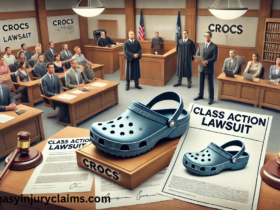Introduction
An endurance warranty is a type of extended warranty offered to protect vehicles beyond the manufacturer’s standard warranty. It covers repairs and services for a set period or mileage after the original warranty expires. This warranty aims to give vehicle owners peace of mind by covering unexpected repair costs. Endurance warranties are sold by companies specializing in vehicle protection plans.
Endurance warranty lawsuits involve legal disputes where customers claim that their endurance warranty was not honored as promised. These lawsuits often arise from issues like denial of coverage for repairs or misrepresentation of what the warranty covers. Customers may file these lawsuits seeking compensation or resolution when they believe the warranty provider failed to meet its obligations. Common reasons for these disputes include unclear terms, poor customer service, and failure to process claims correctly.
Background Information
History of Endurance Warranty Companies
Endurance warranty companies have been around for several decades, providing vehicle protection plans to car owners. These companies began as a way to offer extended coverage beyond the standard manufacturer warranties. Over time, they have expanded their services and tailored their offerings to meet the needs of a growing market. They are known for promoting their plans as a way to protect car owners from high repair costs and unexpected breakdowns.
Common Issues Leading to Lawsuits
Several issues often lead to endurance warranty lawsuits. One common problem is the denial of coverage for repairs that customers believe should be included in their warranty. Misrepresentation of the warranty terms is another frequent issue, where the coverage promised is different from what is actually provided. Poor customer service and difficulty in filing claims can also lead to disputes. Customers might feel frustrated if they cannot get their claims processed or if their questions go unanswered.
Types of Warranties Offered
Endurance warranty companies offer different types of warranties. The main types include:
- Powertrain Warranties: These cover major components of the vehicle, such as the engine and transmission. They provide protection for critical parts that can be expensive to repair.
- Bumper-to-Bumper Warranties: These cover almost all parts of the vehicle, except for certain exclusions. They offer broad protection and are often marketed as comprehensive coverage.
- Specialized Warranties: These focus on specific systems or components, such as electronics or air conditioning. They are designed to protect against issues that may not be covered by standard warranties.
Reasons for Lawsuits
Misrepresentation of Coverage
One major reason for endurance warranty lawsuits is misrepresentation of coverage. This happens when the warranty provider advertises benefits or protections that are not actually included in the warranty. For example, a company might promise coverage for certain repairs or services that are later excluded or restricted. Customers might feel deceived when they discover that the actual coverage is less comprehensive than what was initially presented.
Denial of Claims
Another common issue is denial of claims. This occurs when a customer files a claim for a repair or service, but the warranty provider refuses to cover the costs. Denial can happen for various reasons, such as claiming that the repair is not covered under the warranty or that the claim was submitted incorrectly. This can lead to frustration and legal action when customers believe their claims are unjustly denied.
Poor Customer Service
Poor customer service is a significant factor leading to endurance warranty lawsuits. If a warranty provider fails to respond to customer inquiries, processes claims slowly, or does not provide adequate support, customers may become dissatisfied. Poor communication and unhelpful service can cause delays and misunderstandings, leading customers to seek legal remedies to address their grievances.
Violation of Warranty Terms
Violation of warranty terms is another reason for lawsuits. This happens when the warranty provider does not honor the agreement or does not follow the terms outlined in the warranty contract. For example, if a warranty contract promises specific types of coverage or service levels and the provider fails to deliver on those promises, customers may sue for breach of contract. This can include failing to provide the agreed-upon repairs or services as outlined in the warranty terms.
Key Laws and Regulations
Federal Laws Impacting Warranty Claims
In the U.S., several federal laws impact warranty claims. The Magnuson-Moss Warranty Act is a key law that sets standards for written warranties on consumer products. It requires that warranties be clearly stated and that any terms or conditions are disclosed. This law helps protect consumers by ensuring that warranty information is honest and transparent. It also provides a way for consumers to seek legal remedies if a warranty is not honored as promised.
State-Specific Regulations
In addition to federal laws, there are state-specific regulations that govern warranty claims. Each state may have its own set of rules regarding warranties and how they are enforced. These regulations can include additional consumer protections, such as longer periods for warranty coverage or specific requirements for handling disputes. State laws can vary significantly, so it’s important for consumers and warranty providers to understand the rules in their state.
Consumer Protection Laws
Consumer protection laws play a crucial role in endurance warranty lawsuits. These laws are designed to safeguard consumers from unfair practices and fraud. They ensure that companies act in good faith and provide fair treatment. For example, consumer protection laws may cover issues like deceptive advertising, false claims about warranty coverage, and unfair business practices. These laws give consumers the right to seek legal recourse if they are misled or treated unfairly by warranty providers.
Case Studies
Notable Lawsuits Involving Endurance Warranty
Several high-profile endurance warranty lawsuits have brought attention to the issues with extended vehicle warranties. These lawsuits often involve claims where customers argue that the warranty provider failed to honor their coverage promises. For instance, one notable case involved a customer who sued an endurance warranty company for not covering a major engine repair that was supposed to be included under their plan. The case highlighted common issues such as misrepresentation and denial of claims.
Analysis of Court Rulings
In analyzing court rulings from endurance warranty lawsuits, several patterns emerge. Courts often look at whether the warranty provider clearly communicated the terms and whether those terms were followed. Rulings can vary based on the evidence provided, the clarity of the warranty contract, and adherence to federal and state laws. Courts may award damages if they find that the warranty provider breached the contract or failed to meet its obligations.
Settlement Details and Outcomes
Settlement details and outcomes in endurance warranty lawsuits can vary. In some cases, settlements involve financial compensation for the affected customers or modifications to the warranty terms. Settlements may also include agreements to improve customer service or adjust business practices. The outcomes of these lawsuits often serve as a reminder for warranty providers to be transparent and fair in their dealings with customers.
Legal Process
Steps in Filing a Lawsuit
Filing a lawsuit related to an endurance warranty involves several key steps. First, a customer must identify the issues with their warranty and attempt to resolve them directly with the warranty provider. If these attempts fail, the next step is to file a formal complaint in court. This involves submitting a complaint that outlines the claims and damages sought. After the complaint is filed, the court will serve the warranty provider with a copy of the complaint, and both parties will go through a process of discovery, where they exchange information and evidence. The case may then proceed to trial, where a judge or jury will make a decision based on the evidence presented.
Gathering Evidence and Documentation
Gathering evidence and documentation is crucial in endurance warranty lawsuits. Customers need to collect all relevant documents related to their warranty, including the warranty contract, repair records, correspondence with the warranty provider, and any denial letters. Evidence such as receipts for repairs and maintenance, and any communication logs with the warranty provider can also be important. This documentation helps establish the validity of the claim and supports the case in court.
Legal Representation and Costs
Legal representation is often necessary for navigating endurance warranty lawsuits. Hiring an attorney who specializes in consumer protection or warranty disputes can help ensure that the case is handled effectively. Attorneys can provide guidance on the legal process, help with gathering evidence, and represent the customer in court. Legal costs can vary depending on the complexity of the case and the attorney’s fees. Some attorneys work on a contingency basis, meaning they only get paid if the case is won. It’s important to discuss fees and payment options with the attorney before proceeding.
How to Avoid Legal Issues
Tips for Understanding Warranty Terms
To avoid legal issues with an endurance warranty, it is crucial to fully understand the warranty terms. Carefully read the entire warranty contract before purchase, paying attention to coverage details, exclusions, and limitations. Ask the warranty provider for clarification on any terms that are unclear. Make sure to understand what is covered, such as specific repairs or parts, and what is not covered. Keep a copy of the warranty for future reference and review it periodically to stay informed about the terms.
Best Practices for Filing Claims
Following best practices for filing claims can help prevent disputes. When you need to file a claim, follow the procedure outlined in the warranty contract. Submit claims promptly and provide all required documentation, such as repair records and proof of maintenance. Ensure that you use the correct forms and follow any specific instructions provided by the warranty company. Keep copies of all submitted documents and correspondence with the warranty provider. If a claim is denied, review the denial letter carefully and address any issues or errors mentioned.
Ensuring Compliance with Warranty Terms
To ensure compliance with warranty terms, adhere to the maintenance and repair guidelines specified in the warranty contract. Regularly service your vehicle according to the recommended schedule and keep detailed records of all maintenance activities. Avoid making unauthorized modifications to the vehicle that could void the warranty. Follow any additional requirements set by the warranty provider, such as using specific service centers or parts. By staying compliant with the warranty terms, you help protect your coverage and reduce the risk of disputes.
Conclusion
Endurance warranty lawsuits often arise from issues such as misrepresentation of coverage, denial of claims, poor customer service, and violation of warranty terms. These lawsuits are influenced by federal laws, state-specific regulations, and consumer protection laws that govern warranty practices and consumer rights. Understanding the history of endurance warranty companies, the types of warranties they offer, and common legal issues can help consumers navigate disputes. Analyzing notable lawsuits, court rulings, and settlement details provides insight into how these cases are resolved.
The future outlook for endurance warranty lawsuits suggests a continued focus on transparency and fair practices. As more consumers become aware of their rights and legal protections, warranty providers may face increased scrutiny. Regulatory bodies and consumer advocacy groups are likely to push for stricter enforcement of warranty terms and better consumer protections. Advances in technology and data management could also impact how warranties are administered and how disputes are handled.
Dive into the world of Law with Easy Injury Claims. Visit our website to uncover endless inspiration!












Got a Questions?
Find us on Socials or Contact us and we’ll get back to you as soon as possible.